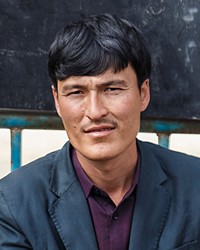Keriya in China

Photo Source:
Copyrighted © 2026
livcool - Shutterstock All rights reserved. Used with permission |
Send Joshua Project a map of this people group.
|
| People Name: | Keriya |
| Country: | China |
| 10/40 Window: | Yes |
| Population: | 800 |
| World Population: | 800 |
| Primary Language: | Uyghur |
| Primary Religion: | Islam |
| Christian Adherents: | 0.00 % |
| Evangelicals: | 0.00 % |
| Scripture: | Complete Bible |
| Ministry Resources: | Yes |
| Jesus Film: | Yes |
| Audio Recordings: | Yes |
| People Cluster: | Uyghur |
| Affinity Bloc: | Turkic Peoples |
| Progress Level: |
|
Introduction / History
After they were attacked by the Ladakhis, "a small number of Gug people crossed the Kunlun Mountains and settled in the Keriya River Valley, where they reclaimed land, hunted and herded animals and lived a self-sufficient life until today." The Keriya live on the ruins of the ancient city of Keladun, which is now buried beneath the sand. Archaeologists have found items of pottery dated from the Han Dynasty (206 BC - AD 220). Ruins of twenty similar cities are found throughout the desert. The Keriya people were first "discovered" by Swedish explorer Svan Anders von Hedin in 1896 after he had traveled 12 days into the desert, following the Keriya River. It recently dried up after a sudden change in course and can no longer be followed.
The Keriya have been officially counted as part of the Uyghur nationality in China. Although they now speak Uyghur as their own language, they claim to be descended from the Gug tribe who fled into the desert centuries ago to escape the attacking Ladakhis from Kashmir.
What Are Their Lives Like?
The Keriya live in widely scattered communities. When there is a wedding or other celebration, "the invitation is written on a slip of paper and passed from family to family, which usually takes a fortnight to do the rounds." Most Keriya families herd goats and sheep. Many also raise camels, horses, and donkeys. Mutton pancakes, called somitikubaxi, are the main staple of the Keriya's diet.
What Are Their Beliefs?
The Keriya have embraced the Sunni Islamic beliefs of most of the people groups in Xinjiang. They do not have their own mosques but are careful to observe all Muslim rules and regulations.
The hidden Keriya people have never heard the gospel. They present a significant physical challenge for any would-be evangelist who must venture deep into the awesome and hostile Taklimakan Desert to reach these precious souls. Taklimakan is a Turkic word which means "many go in, but few come out." Summer temperatures in the area frequently rise to over 50° Celsius (122°F).
What Are Their Needs?
Without the guidance of Christ, these people will be lost in this life and the life to come. They need someone to go to them as Christ-bearers.
Prayer Points
Pray for the spiritual blindness and bondage to the evil one to be removed so they can understand and respond to Christ.
Pray for the Lord to provide for their physical and spiritual needs as a testimony of his power and love.
Pray that the Keriya people will have a spiritual hunger that will open their hearts to the King of kings.
Pray for an unstoppable movement to Christ among them.